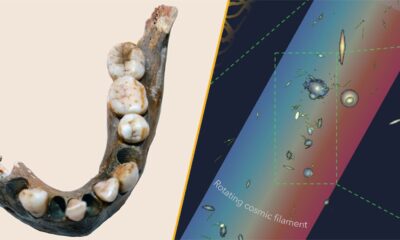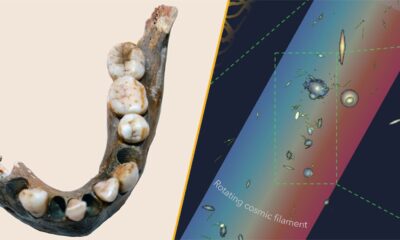Science
Ancient Butt-Drag Track Discovered: First of Its Kind in South Africa

A remarkable paleontological discovery has emerged from South Africa, where researchers have identified a 126,000-year-old buttock-drag track thought to be made by a rock hyrax. This unprecedented find marks the first fossilized butt-drag trace ever recorded, offering new insights into the behavior of these small, furry mammals known as dassies.
The study, published in the journal Ichnos, highlights the significance of this unique fossil. Rock hyraxes, or Procavia capensis, are herbivorous mammals typically found in Africa and the Arabian Peninsula. Their appearance in the fossil record is uncommon, making this discovery particularly noteworthy. The authors of the study state, “To the best of our knowledge, buttock-drag features have until now not been reported in the paleoichnology record.”
Rock hyraxes inhabit rocky terrains, which often limits the preservation of their traces. Nonetheless, these animals are known to traverse sandy areas at times, a behavior that has enabled scientists to unearth this exceptional fossil evidence. Characterized by short legs and stout bodies, rock hyraxes leave distinctive marks on the ground when they drag their bellies, similar to scooting behavior observed in domesticated dogs.
The butt-drag track was discovered in the Bosbokfontein Private Nature Reserve, located along a beach where wind-blown sand had solidified into rock over time. The fossilized feature measures approximately 37 inches in length and represents evidence of the hyrax’s unique locomotion.
Unveiling the World of Ichnology
The research team specializes in ichnology, a branch of paleontology focused on studying trace fossils—indirect signs of past life such as tracks, trails, and burrows. These fossils provide critical information about an animal’s behavior, environment, and interactions. Although rock hyraxes do not leave behind many direct fossils, they contribute significantly to the trace fossil record through polished rocks and urination deposits.
As the authors note, “Hyrax traces form an important, unusual, and unique part of the trace fossil record, while highlighting the notion of the Afrotheria.” Their findings suggest that further exploration for similar fossils across the African continent may yield even more exciting discoveries.
The research team remains committed to locating additional rock hyrax butt-drag tracks. They aspire that this groundbreaking discovery will inspire others to appreciate the importance of trace fossils in understanding evolutionary history.
This unique find not only enriches the scientific community’s knowledge of rock hyraxes but also emphasizes the vital role trace fossils play in reconstructing past ecosystems.
-

 Technology5 months ago
Technology5 months agoDiscover the Top 10 Calorie Counting Apps of 2025
-

 Technology3 weeks ago
Technology3 weeks agoOpenAI to Implement Age Verification for ChatGPT by December 2025
-

 Health3 months ago
Health3 months agoBella Hadid Shares Health Update After Treatment for Lyme Disease
-

 Health3 months ago
Health3 months agoAnalysts Project Stronger Growth for Apple’s iPhone 17 Lineup
-

 Health3 months ago
Health3 months agoErin Bates Shares Recovery Update Following Sepsis Complications
-

 Technology5 months ago
Technology5 months agoDiscover How to Reverse Image Search Using ChatGPT Effortlessly
-

 Technology3 months ago
Technology3 months agoElectric Moto Influencer Surronster Arrested in Tijuana
-

 Technology2 months ago
Technology2 months agoDiscover 2025’s Top GPUs for Exceptional 4K Gaming Performance
-

 Technology5 months ago
Technology5 months agoMeta Initiates $60B AI Data Center Expansion, Starting in Ohio
-

 Technology5 months ago
Technology5 months agoRecovering a Suspended TikTok Account: A Step-by-Step Guide
-

 Health5 months ago
Health5 months agoTested: Rab Firewall Mountain Jacket Survives Harsh Conditions
-

 Lifestyle5 months ago
Lifestyle5 months agoBelton Family Reunites After Daughter Survives Hill Country Floods





















